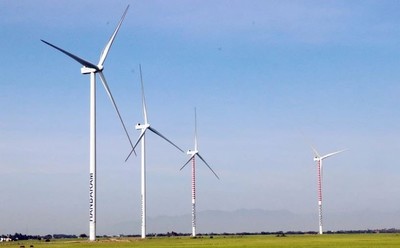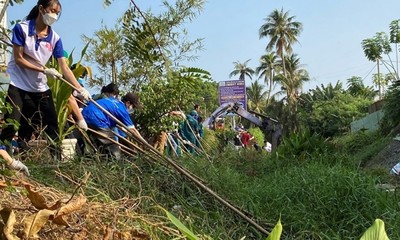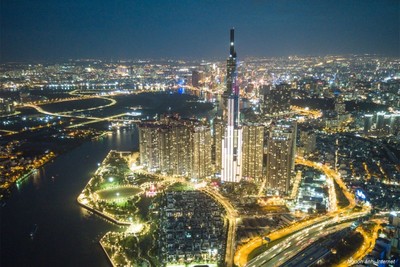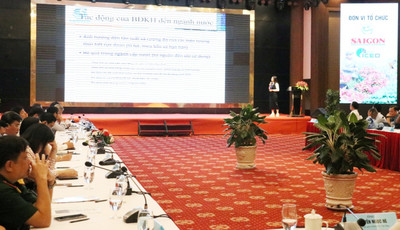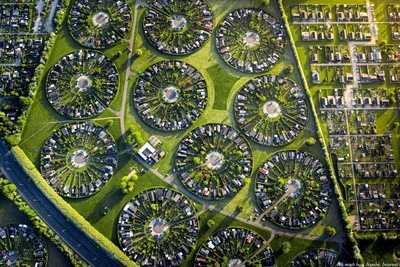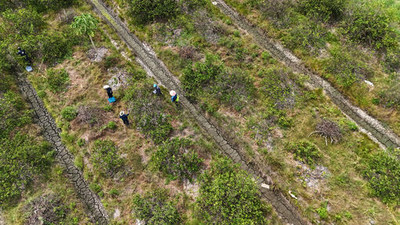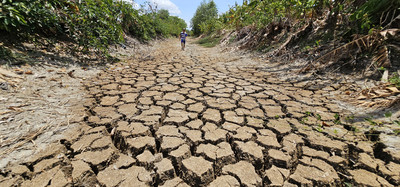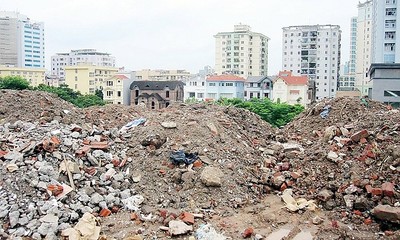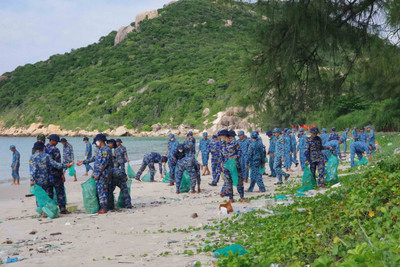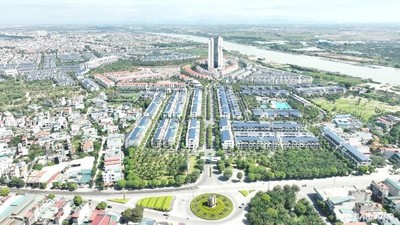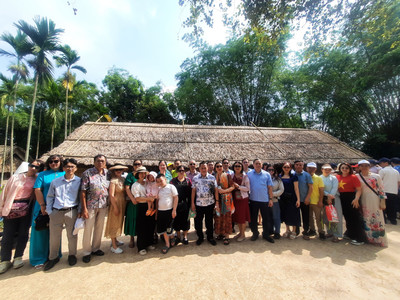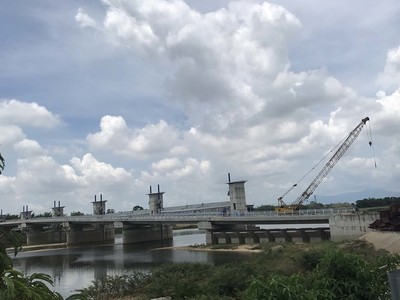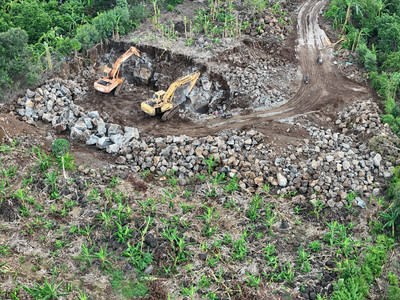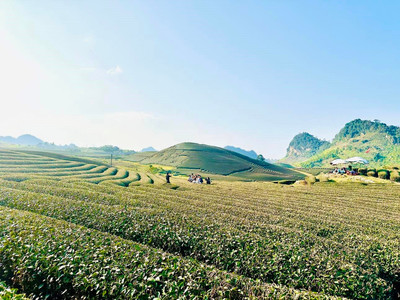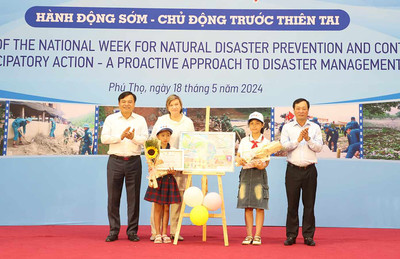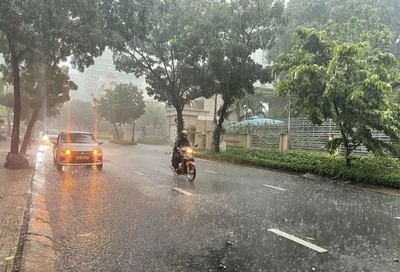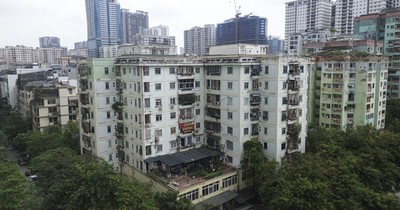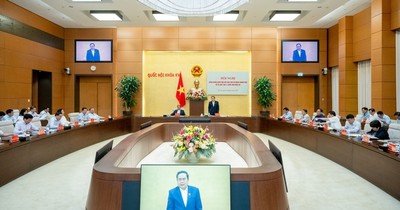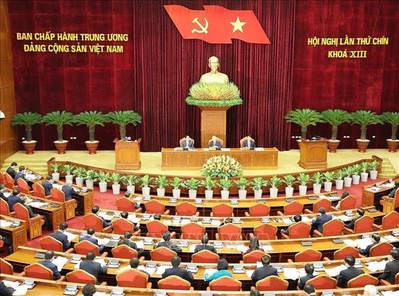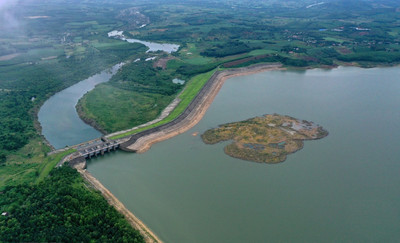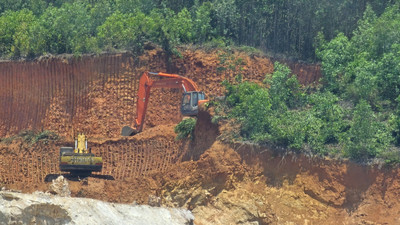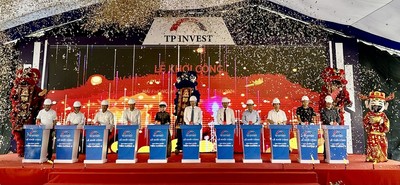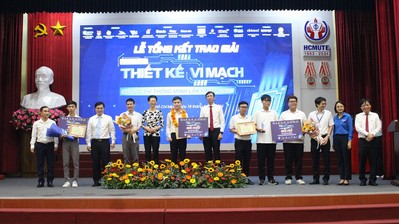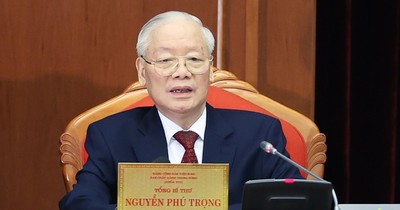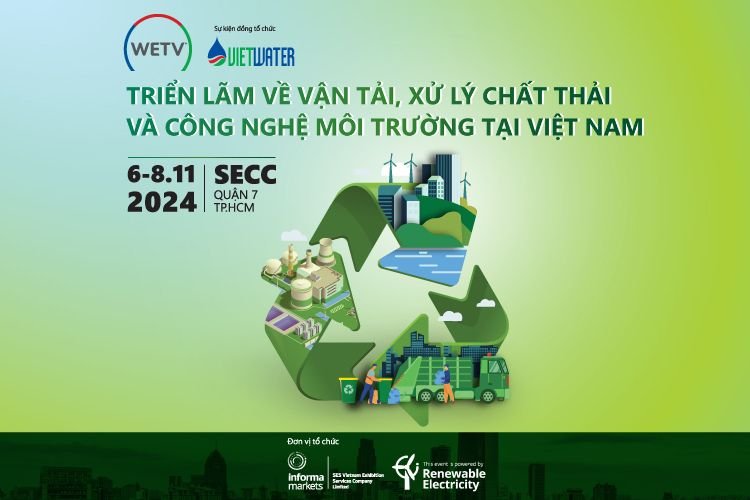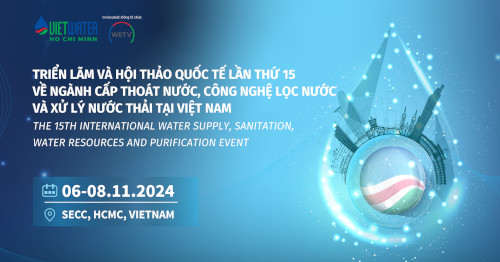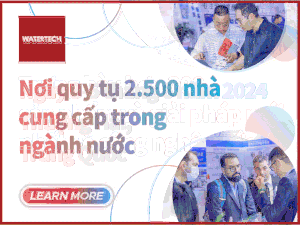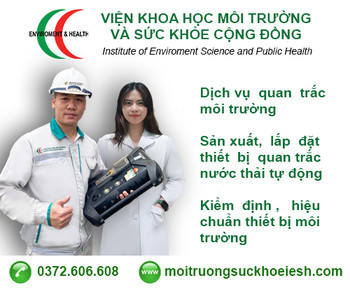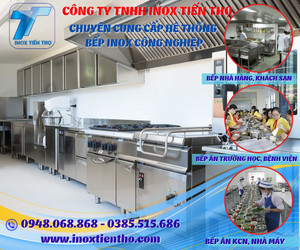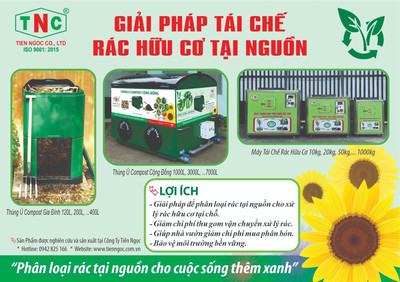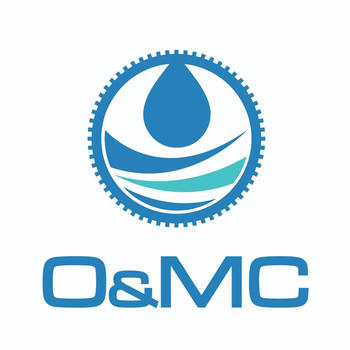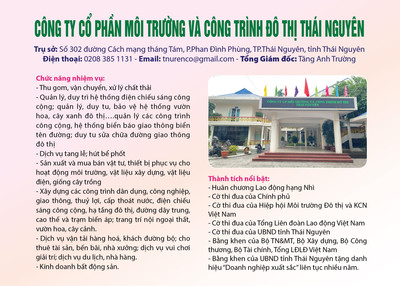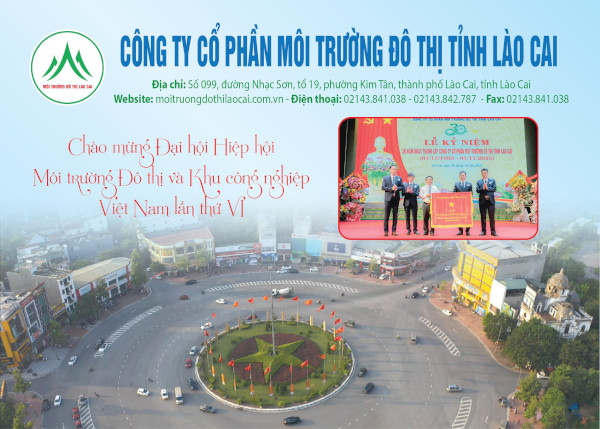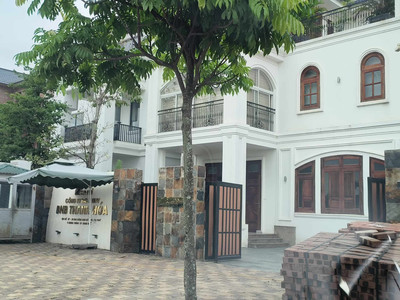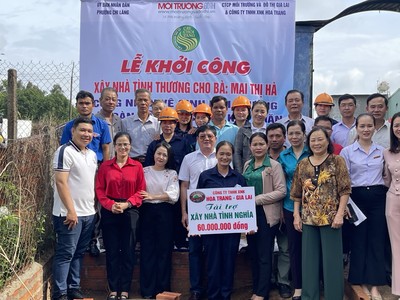Công bố quốc tế lĩnh vực môi trường số 17-2024
Ban biên tập Chuyên trang Quản lý Môi trường, Tạp chí Môi trường và Đô thị Việt Nam trân trọng giới thiệu tới quý độc giả Công bố quốc tế lĩnh vực môi trường số 17-2024.
Về quản lý môi trường
- Sự phân bố theo không gian và xu hướng thời gian (2009-2020) của hỗn hợp hóa học trong sông suối trên khắp vùng Lombardy (Ý).
- Tác động của việc xây dựng cơ sở hạ tầng kỹ thuật số đến hiệu quả phát thải carbon: Xem xét vai trò của các thành phố trung tâm.
- Một hệ thống blockchain hỗ trợ bảo vệ dữ liệu xuyên biên giới và xác minh tính nhất quán trong khuôn khổ giao dịch phát thải carbon toàn cầu thống nhất.
- Phương pháp thử nghiệm để ước tính quy mô dân số cho các nhà máy xử lý nước thải bằng dữ liệu điều tra dân số: Ý nghĩa đối với dịch tễ học dựa trên nước thải.
- Tính hợp pháp của tổ chức và các chiến lược phi thị trường vững chắc là chất xúc tác của liên minh quản lý xanh.
- Giám sát tình trạng kháng kháng sinh trong nước thải ở các nước Bắc Âu: Đánh giá có hệ thống.
- Tác động của nhiệt độ môi trường và ô nhiễm không khí đối với tình trạng lây nhiễm SARS-CoV2 và tình trạng hậu COVID-19 ở Bỉ (2021–2022).
- Lộ trình hướng tới SDG - sự xuất hiện của đổi mới công nghệ và phát triển cơ sở hạ tầng vì tiến bộ xã hội và di chuyển.
- Đặc điểm động lực học không gian và thời gian của lượng khí thải carbon trong các cộng đồng dân cư ven đô: Quan điểm vòng đời.
- Các chất ô nhiễm mới nổi và ảnh hưởng của chúng đối với thực vật: Những thách thức hiện tại và tương lai và giải pháp
Về môi trường đô thị
- Phân bố không gian, thời gian, phân bổ nguồn và rủi ro sinh thái của các chất tương tự bisphenol trong lưu vực sông có mức độ đô thị hóa cao.
- Động lực thủy văn sinh thái trong tương lai: Tác động của đô thị hóa và biến đổi khí hậu trong bối cảnh đang thay đổi: Một nghiên cứu điển hình về lưu vực sông Birmingham.
- Đẳng cấp, sự ngờ vực và sự thờ ơ của thành phố: Những rào cản đan xen đối với sự hội nhập của những người nhặt rác ở Ấn Độ.
- Giám sát động thái tán cây trên các môi trường sống đô thị không đồng nhất: Một nghiên cứu theo chiều dọc sử dụng dữ liệu viễn thám đa nguồn.
- Ảnh hưởng của chính sách thành phố thông minh đến hiệu quả sử dụng năng lượng xanh đô thị - Một thử nghiệm gần như tự nhiên trên 196 thành phố.
- Kiểm soát ô nhiễm trong nhà dựa trên mô hình thay thế cho các tòa nhà dân cư.
- Các kịch bản chuyển đổi hướng tới cảnh quan đa chức năng: Mô hình phân bổ sử dụng đất đa tiêu chí áp dụng cho tỉnh Jambi, Indonesia.
- Tác động của biến đổi khí hậu đến việc thu hồi khí mê-tan ở bãi chôn lấp chất thải rắn đô thị: Một nghiên cứu điển hình ở vùng khí hậu nhiệt đới ẩm.
- Vận chuyển chất gây ô nhiễm từ các bãi thải rắn: Tác động đến suy thoái môi trường, tập trung vào các vùng lãnh thổ thủ đô.
- Xây dựng tiêu chuẩn kiểm tra tốc độ phân hủy và sinh khí metan của các cơ sở đồng tiêu hóa chất thải hữu cơ tại Hàn Quốc.
Về môi trường khu công nghiệp
- Phân tích lựa chọn lộ trình công nghệ trung hòa carbon trong ngành thép theo chính sách ưu đãi.
- Cụm công nghiệp như một phương tiện chuyển đổi nền kinh tế tuần hoàn: Nghiên cứu điển hình về mạng lưới tại bốn cụm công nghiệp ở Zimbabwe.
- Thu hoạch hydro từ nước thải công nghiệp polyme: Reforming pha nước 1,5-pentanediol.
- Phương pháp tiếp cận Bayes lai để đánh giá các công nghệ công nghiệp 4.0 nhằm đạt được mục tiêu khử cacbon trong ngành sản xuất.
- Đặc điểm phát thải VOC và đánh giá rủi ro sức khỏe trong ngành sản xuất nhựa.
- Mô hình hệ thống các quy trình trong môi trường làm việc có rủi ro cao: Bằng chứng thực nghiệm cho cách tiếp cận Mô hình An toàn 2 sử dụng Bộ ba hành vi tương tác.
- Tác động của Mô hình hóa thông tin tòa nhà và công nghệ tiên tiến trong ngành AEC: Đánh giá hiện đại và định hướng tương lai.
- Nhu cầu hydro và năng lượng của ngành công nghiệp chế biến ở một nước Đức trung hòa về khí hậu sẽ như thế nào?
- Chiến lược khoáng sản quan trọng ở Úc: Nâng cấp công nghiệp mà không nâng cấp môi trường hoặc xã hội.
- Khử cacbon cho các ngành công nghiệp nặng khó giảm thiểu: Hiện trạng và con đường hướng tới tương lai Net-Zero.
- Tận dụng cặp song sinh kỹ thuật số nhận thức trong ngành công nghiệp 5.0 để đạt được mục tiêu phát triển bền vững số 9: Khám phá các chiến lược công nghiệp hóa toàn diện và bền vững.
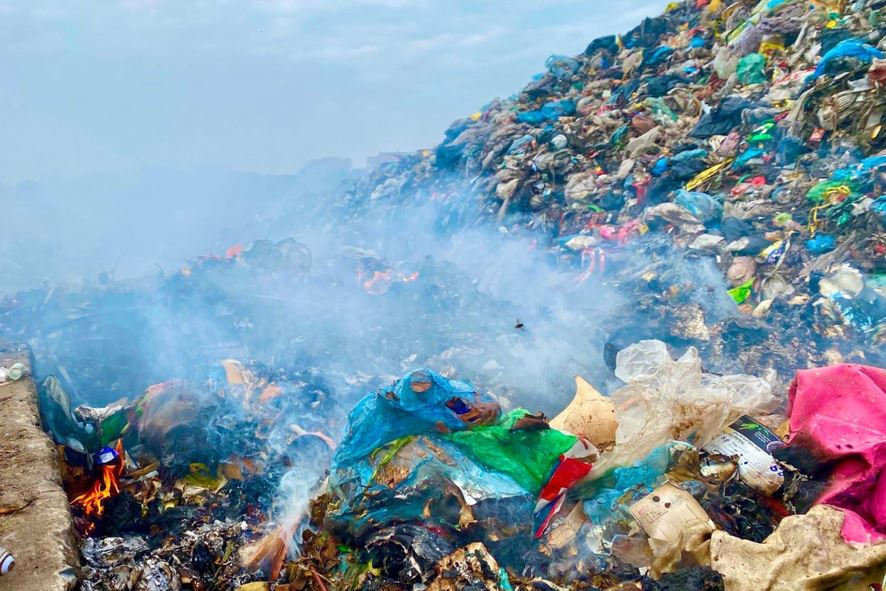
CHUYÊN TRANG QUẢN LÝ MÔI TRƯỜNG
Tạp chí Môi trường và Đô thị Việt Nam
Xin trân trọng giới thiệu!
ENVIRONMENTAL MANAGEMENT / QUẢN LÝ MÔI TRƯỜNG
1. Spatial distributions and temporal trends (2009–2020) of chemical mixtures in streams and rivers across Lombardy region (Italy)Science of The Total Environment
Volume 919, 1 April 2024, 170839, Science of The Total Environment
Abstract
Chemical mixtures in the environment are of increasing concern in the scientific community and regulators. Indeed, evidence indicates that aquatic wildlife and humans can be simultaneously and successively exposed to multiple chemicals mainly originating from different anthropic sources by direct uptake from water and indirectly via eating aquatic organisms. This study analyses a large set of sampling data referring to the entire Lombardy region, the most industrialised and at the same time the most important agriculture area in Italy, investigating the presence and potential effects of chemical mixtures in surface water bodies.
We enriched and further developed an approach based on a previous work, where the overall mixture toxicity was evaluated for three representative aquatic organisms (algae, Daphnia, fish) using the concentration addition model to combine exposure with ecotoxicological data. The calculation of the mixture toxicity has been realised for two scenarios, namely best- and worst-case scenarios. The former considered only quantified compounds in the monitoring campaign, while the latter also included substances with concentrations below the limit of quantification (LoQ). Differences between the two scenario results established the potential toxicity range.
Our findings revealed that differences were minimal when the calculated toxicity in the best-case scenario indicated potential risk and, on the contrary, they suggest that the worst-case scenario is overly conservative; we could also state that including substances with concentrations below the LoQ when calculating the overall toxicity of the mixture is useless and then we focused solely on the best-case scenario. The analysis of spatial and temporal risk trends together with contaminant types and target organisms highlighted specific clusters of contamination. Finally, in several cases, our study found that only few compounds were responsible for the majority of mixture toxicity.
2. The impact of digital infrastructure construction on carbon emission efficiency: Considering the role of central cities
Journal of Cleaner Production, Volume 448, 5 April 2024, 141687
Abstract
This paper delineates the impact of digital infrastructure construction (DIC) on carbon emission efficiency (CEE) within the ambit of China's "Broadband China" pilot policy (BCP). A quasi-natural experimental framework reveals direct effects, indirect influences, non-linear relationships, and spatial heterogeneity of DIC on CEE. The research distills several pivotal insights: (1) DIC exerts a markedly positive impact on CEE, as evidenced by comprehensive robustness analyses. (2) The digital service industry agglomeration and green technology innovation act as key mechanisms through which DIC influences CEE. (3) The intensity of BCP exhibits an "inverted U-shaped" relationship with CEE. As the level of CEE increases, the impact of DIC on CEE gradually rises, demonstrating a marginal increasing effect. (4) The spatial spillover effects of DIC on CEE vary with increasing distance, revealing a dichotomy: an "agglomeration shadow" within 200 km of policy pilot cities and a pronounced stimulative effect on CEE within a 200–300 km radius. (5) The efficacy of DIC in enhancing CEE is augmented by proximity to central cities, with the optimal radius of influence for central cities determined to be 200 km, beyond which a diminishing gradient effect is observed, forming a "core-peripheral" spatial pattern. The findings endorse the strategic augmentation of digital infrastructure as a lever for economic and environmental co-benefits, steering towards carbon neutrality and equitable regional development.
3. Impact of comprehensive air pollution control policies on six criteria air pollutants and acute myocardial infarction morbidity, Weifang, China: A quasi-experimental study
Science of The Total Environment, Volume 922, 20 April 2024, 171206
Abstract
Comprehensive air pollution control policies may reduce pollutant emissions. However, the impact on disease morbidity of the change for the concentration of air pollutants following the policies has been insufficiently studied. We aim to assess the impact of comprehensive air pollution control policies on the levels of six criteria air pollutants and acute myocardial infarction (AMI) morbidity in Weifang, China. This study performed an interrupted time series analysis.
The linear model with spline terms and generalized additive quasi-Poisson model were used to estimate the immediate change from 2016 to 2019 in the daily concentration of six air pollutants (PM2.5, PM10, SO2, NO2, O3, and, CO) and AMI incident cases (Age ≥35) associated with the implementation of air pollution control policies in Weifang, respectively. After the implementation of air pollution control policies, air quality in Weifang had been improved. Specifically, the daily concentrations of PM2.5, PM10, SO2, and, CO immediately decreased by 27.9 % (95 % CI: 6.6 % to 44.3 %), 32.9 % (95 % CI: 17.5 % to 45.5 %), 14.6 % (95 % CI: 0.4 % to 26.8 %), and 33.9 % (95 % CI: 22.0 % to 44.0 %), respectively. In addition, the policies implementation was also associate with the immediate decline in the AMI morbidity (−6.5 %, 95 % CI: −10.4 % to −2.3 %). And subgroup analyses indicate that the health effects of the policy intervention were only observed in female (−9.4 %, 95 % CI: −14.4 % to −4.2 %) and those aged ≥65 years (−10.5 %, 95 % CI: −14.6 % to −6.2 %). During the final 20 months of the study period, the policy intervention was estimated to prevent 1603 (95 % CI: 574 to 2587) cases of incident AMI in Weifang. Our results provide strong rationale that the policy intervention significantly reduced ambient pollutant concentrations and AMI morbidity, which highlighted the importance for a comprehensive and rigorous air pollution control polic
4. A blockchain system supporting cross-border data protection and consistency verification in unified global carbon emissions trading framework
Journal of Cleaner Production, Volume 448, 5 April 2024, 141693
Abstract
The Carbon Emission Trading (CET) system has been independently implemented in dozens of countries to protect the environment. Meanwhile, there are efforts underway to establish a Unified Global CET (UG-CET) system, which aims to better coordinate emission reduction efforts worldwide and protect the global environment. However, these efforts overlook the issue of data security, which may raise concerns for countries considering participation in such a system. In this paper, we propose a UG-CET system that addresses data security concerns.
Firstly, it safeguards cross-border data by not requiring countries to share detailed data, but only providing generalized data. Secondly, it is capable of auditing data, ensuring data consistency even in the absence of shared original data. Therefore, it respects the interests of participating countries by not only protecting their own data but also ensuring the authenticity of data shared by other countries. Finally, the proposed scheme is validated using authentic CET data, and the results demonstrated that it can maintain a high efficiency while achieving a verification accuracy of 99.6%, effectively ensuring the security and consistency of the data flow in carbon emission trading.
5. Testing methods to estimate population size for wastewater treatment plants using census data: Implications for wastewater-based epidemiology
Science of The Total Environment, Volume 922, 20 April 2024, 170974
Abstract
In wastewater-based epidemiology (WBE), wastewater loads are commonly reported as a per capita value. Census population counts are often used to obtain a population size to normalise wastewater loads. However, the methods used to calculate the population size of wastewater treatment plants (WWTPs) from census data are rarely reported in the WBE literature. This is problematic because the geographical extents of wastewater catchments and census area units rarely align perfectly with each other and exist at different spatial scales. This complicates efforts to estimate the number of people serviced by WWTPs in these census area units. This study compared four geospatial methods to combine wastewater catchment areas and census area units to calculate the census population size of wastewater treatment plants.
These methods were applied nationally to WWTPs across New Zealand. Population estimates varied by up to 73 % between the methods, which could skew comparisons of per capita wastewater loads between sites. Variability in population estimates (relative standard deviation, RSD) was significantly higher in smaller catchments (rs = −0.727, P < .001), highlighting the importance of method selection in smaller sites. Census population estimates were broadly similar to those provided by wastewater operators, but significant variation was observed for some sites (ranging from 42 % lower to 78 % higher, RSD = 262 %). We present a widely applicable method to calculate population size from census, which involves disaggregating census area units by individual properties. The results reinforce the need for transparent reporting to maintain confidence in the comparison of WBE across sites and studies.
6. Organizational legitimacy and firm nonmarket strategies as catalysts of alliance green management
Journal of Cleaner Production, Volume 447, 1 April 2024, 141315
Abstract
Numerous studies have previously highlighted the potential challenges in association with implementing green management practices within firms. However, there remains a lack of comprehensive understanding concerning the specific factors that drive firms to adopt alliance green management (AGM). To address the existing gap in knowledge, our research builds upon embeddedness perspective to unravel the underlying dynamics motivating firms to engage in AGM.
Drawing on the data of 199 alliance firms in China, our findings demonstrate a positive relation between organizational legitimacy and AGM. We also find that firm nonmarket strategies can (green management within focal firm and corporate political activity) positively influence AGM. Further analyses suggest that environmental scanning enhances the positive relation between organizational legitimacy and AGM. Besides, the results indicate that environmental scanning enhances both the green management within focal firm – AGM linkage and the corporate political activity – AGM linkage. Collectively, our findings substantiate the important roles of organizational legitimacy and firm nonmarket strategies in shaping AGM in an emerging economy.
7. Antibiotic resistance monitoring in wastewater in the Nordic countries: A systematic review
Environmental Research, Volume 246, 1 April 2024, 118052
Abstract
The Nordic countries (Denmark, Finland, Iceland, Norway, and Sweden) have effectively kept lower antibiotic-resistant bacterial (ARB) pathogen rates than many other countries. However, in recent years, these five countries have encountered a rise in ARB cases and challenges in treating infections due to the growing prevalence of ARB pathogens. Wastewater-based surveillance (WBS) is a valuable supplement to clinical methods for ARB surveillance, but there is a lack of comprehensive understanding of WBS application for ARB in the Nordic countries.
This review aims to compile the latest state-of-the-art developments in WBS for ARB monitoring in the Nordic countries and compare them with clinical surveillance practices. After reviewing 1480 papers from the primary search, 54 were found relevant, and 15 additional WBS-related papers were included. Among 69 studies analyzed, 42 dedicated clinical epidemiology, while 27 focused on wastewater monitoring. The PRISMA review of the literature revealed that Nordic countries focus on four major WBS objectives of ARB: assessing ARB in the human population, identifying ARB evading wastewater treatment, quantifying removal rates, and evaluating potential ARB evolution during the treatment process. In both clinical and wastewater contexts, the most studied targets were pathogens producing carbapenemase and extended-spectrum beta-lactamase (ESBL), primarily Escherichia coli and Klebsiella spp.
However, vancomycin-resistant Enterococcus (VRE) and methicillin-resistant Staphylococcus aureus (MRSA) have received more attention in clinical epidemiology than in wastewater studies, probably due to their lower detection rates in wastewater. Clinical surveillance has mostly used culturing, antibiotic susceptibility testing, and genotyping, but WBS employed PCR-based and metagenomics alongside culture-based techniques. Imported cases resulting from international travel and hospitalization abroad appear to have frequently contributed to the rise in ARB pathogen cases in these countries. The many similarities between the Nordic countries (e.g., knowledge exchange practices, antibiotic usage patterns, and the current ARB landscape) could facilitate collaborative efforts in developing and implementing WBS for ARB in population-level screening.
8. Spatial differences, dynamic evolution and influencing factors of China's construction industry carbon emission efficiency
Journal of Cleaner Production, Volume 448, 5 April 2024, 141593
Abstract
Improving the construction industry carbon emission efficiency (CICEE) is crucial for achieving sustainable development. To promote low-carbon development in the construction industry, it is essential to measure carbon emission efficiency (CEE) and analyze spatial differences, dynamic evolution, and influencing factors. This study measures CICEE in 30 provinces in China from 2005 to 2019 and evaluates CEE using the minimum distance to a strong efficient frontier (MinDS) model with undesirable outputs. Subsequently, the Dagum Gini coefficient and its decomposition, as well as spatial autocorrelation analysis, are used to explore the sources of spatial differences and the spatial clustering pattern of CEE. The dynamic trend of CEE is analyzed through kernel density estimation, traditional and spatial Markov chains. Finally, geographical detectors are used to detect the explanatory factors and their interactions on spatial differences in CEE. The results of this study show that the CICEE presents an increasing and then decreasing trend, with the highest CEE in the eastern region, followed by the central and northeastern regions, and the lowest in the western region. Additionally, the eastern region exhibits the highest intra-regional differences and the highest inter-regional differences with the western region. Meanwhile, CEE shows a positive spatial correlation, with high-high (H-H) clustering in the eastern region and low-low (L-L) clustering in the western and northeastern regions. Polarization has been evident throughout the entire country and its four regions in recent years. It is challenging to achieve the CEE transfer through rapid advancement, and the efficiency of neighboring provinces will influence the potential transfer of the local province. Finally, factors such as enterprise scale, economic development level, degree of openness to the outside world, innovation level, industrial structure, and energy consumption structure all affect the spatial differences in CEE, with the interaction effect being higher than the single factor.
This study presents a novel computational model to measure CICEE, analyzes the structural factors contributing to the spatial differences in CICEE, and provides theoretical support for the synergistic improvement of CEE across different regions. Combining with spatial autocorrelation analysis, the spatial distribution characteristics of CICEE are analyzed from the static level. This study provides a comprehensive examination of the evolution trend of CICEE, focusing on its dynamic evolution characteristics and the long-term transfer dimension. Additionally, geographical detector technology is introduced for the first time to analyze the influencing factors of spatial differences in CICEE. providing scientific evidence for the sustainable and coordinated development of different regions in China's construction industry. Furthermore, this study also contributes to the development of varied strategies for improving CICEE in China.
9. The impact of ambient temperature and air pollution on SARS-CoV2 infection and Post COVID-19 condition in Belgium (2021–2022)
Environmental Research, Volume 246, 1 April 2024, 118066
Abstract
Introduction
The associations between non-optimal ambient temperature, air pollution and SARS-CoV-2 infection and post COVID-19 condition (PCC) remain constrained in current understanding. We conducted a retrospective analysis to explore how ambient temperature affected SARS-CoV-2 infection in individuals who later developed PCC compared to those who did not. We investigated if these associations were modified by air pollution.
Methods
We conducted a bidirectional time-stratified case-crossover study among individuals who tested positive for SARS-CoV-2 between May 2021 and June 2022. We included 6302 infections, with 2850 PCC cases. We used conditional logistic regression and distributed lag non-linear models to obtain odds ratios (OR) and 95% confidence intervals (CI) for non-optimal temperatures relative to the period median temperature (10.6 °C) on lags 0 to 5. For effect modification, daily average PM2.5 concentrations were categorized using the period median concentration (8.8 μg/m3). Z-tests were used to compare the results by PCC status and PM2.5.
Results
Non-optimal cold temperatures increased the cumulative odds of infection (OR = 1.93; 95%CI:1.67–2.23, OR = 3.53; 95%CI:2.72–4.58, for moderate and extreme cold, respectively), with the strongest associations observed for non-PCC cases. Non-optimal heat temperatures decreased the odds of infection except for moderate heat among PCC cases (OR = 1.32; 95%CI:0.89–1.96). When PM2.5 was >8.8 μg/m3, the associations with cold were stronger, and moderate heat doubled the odds of infection with later development of PCC (OR = 2.18; 95%CI:1.01–4.69). When PM2.5 was ≤8.8 μg/m3, exposure to non-optimal temperatures reduced the odds of infection.
Conclusion
Exposure to cold increases SARS-CoV2 risk, especially on days with moderate to high air pollution. Heated temperatures and moderate to high air pollution during infection may cause PCC. These findings stress the need for mitigation and adaptation strategies for climate change to reduce increasing trends in the frequency of weather extremes that have consequences on air pollution concentrations.
10. Promoting blockchain technology in low-carbon management to achieve firm performance from a socio-economic perspective: Empirical evidence from China
Journal of Cleaner Production, Volume 448, 5 April 2024, 141686
Abstract
Blockchain technology is a disruptive innovation that can accelerate carbon neutrality while maintaining business growth. However, its full potential has yet to be fully understood due to the complexity of its technical and socio-environmental characteristics. Drawing on socio-technical theory, this study aims to explore the main antecedents and their influencing mechanisms on blockchain-based low-carbon emission management, as well as investigate whether reducing carbon emissions leads to improved firm performance. Using data from 395 online respondents recruited from Chinese companies, the results of PLS-SEM indicate that cost-benefit efficiency, socio-environmental competitive pressure, and environmental legitimacy positively influence both the basic and auxiliary adoption of blockchain in low-carbon emission management. Additionally, relative advantage and regulatory policy partially influence the adoption of blockchain, while technology readiness has no significant effect on either basic or auxiliary adoption. Furthermore, both the basic and auxiliary adoption of blockchain contribute to carbon emission reduction and improve firm performance (i.e., operational, economic, and social performance). The findings of this study will contribute to the growing literature and managerial practice regarding blockchain technology and carbon neutrality.
11. A roadmap to SDGs-emergence of technological innovation and infrastructure development for social progress and mobility
Environmental Research, Volume 246, 1 April 2024, 118102
Abstract
The goal of this study was to conduct a thorough investigation on understanding how infrastructure growth and technological innovation affect social mobility and the Sustainable Development Goals (SDGs). This study aimed to illuminate the underlying mechanisms by exploring the mediating function of psychological empowerment and the moderating impact of community satisfaction. The study carefully chose a sizeable sample of 370 connected to the mega project CPEC. Data collection was carried out using a questionnaire-based approach. Notably, the study confirmed the large and favorable influence of technical innovation and infrastructural development on both the SDGs-13 (climate change) and social mobility. Furthermore, this study provided light on the critical function of environmental impacts identifying it as an important mediating mechanism that magnifies the effects of innovation and infrastructure on long-term development outcomes. It gives decision-makers in government, business, international organizations, and local communities useful information by offering empirical data and insights. This study offers a novel perspective and explores the relationship between infrastructure growth, technological innovation, social mobility, and SDGs-13-climate change. It uncovers the pivotal roles of psychological empowerment and community satisfaction, offering fresh insights into global development strategies influencing SDGs.
12. Characterizing spatiotemporal dynamics of carbon emissions in peri-urban residential communities: A life cycle perspective
Journal of Cleaner Production, Volume 448, 5 April 2024, 141613
Abstract
Building stock provides favorable material and welfare support to the urbanization process, but also triggers significant resource extraction and carbon emissions. Spatial explicit stock studies have focused mainly on developed areas and mature cities, with less attention paid to peri-urban areas. In terms of carbon emission, inconsistent system boundary selection and lack of building life cycle analysis limit the accuracy and comparability of results. Moreover, the absence of spatial distribution of emissions undermines support to regional carbon reduction initiatives. In this study, the Yangtze River Delta Integration Demonstration Area (YRDA), which is considered as a typical peri-urban area in China, was selected to study the spatiotemporal pattern of material flows and stocks at the residential community scale since the reform of the housing system in 1998, and to analyze spatiotemporal dynamics of carbon emissions over the life cycle of buildings.
The results show that material inputs in peri-urban areas have experienced a fluctuating increase, with a gradual decline after 2016 as housing policies were tightened, and have a lower residential stock intensity than city centers. Residential carbon emissions also fluctuate while trending upwards, with operation accounting for the highest share of emissions, followed by building material production, with demolition now causing a rapid growth in emissions. Material stocks and residential carbon emissions display significant spatial heterogeneity, and a new concentration area has formed at the intersection of the three administrative districts that of YRDA. The study underscores the influence of economic growth and housing policy on the spatiotemporal pattern of building stocks, flows and carbon emissions, offering insights for cross-boundary ecosystem governance and regional circular economy development.
13. Emerging pollutants and their effects on plants: Present and future challenges, and their solutions
Environmental Pollution, Volume 346, 1 April 2024, 123553
Abstract
Emerging pollutants (EPs) are generated by fast-growing industries and human activity, and their impact on the environment remains to be explored. Rare-earth elements (REEs) and engineered nanomaterials (ENMs) are among the EPs frequently used in a wide range of high-tech industries (Kusiak et al. and Zhang et al. in this issue and Siddiqui et al., 2022 ). Therefore, there is a pressing need to investigate their behavior in the environment and their biological effects on living organisms, including plants, which are a crucial component of the agri-ecosystem and a potential risk for accumulation in the food chain. To date, both favorable and adverse effects of REEs and ENMs on plants have been reported. The ongoing debate on EPs-plant system needs to be to be expanded to include the mechanisms of EPs action and their induced effects from molecular level to yield.
Several studies have shown that ENMs and REEs, in the optimum quantity, can benefit plant growth and development under various conditions by the delivery of essential nutrients and/or activating plant defense system (Campos et al., 2023; Hu et al., 2004; Siddiqui et al., 2019). On the other hand, both ENMs and REEs induce overproduction of reactive oxygen species (ROS) that cause DNA damage and apoptosis-related alterations, and trigger changes at the levels of transcriptome, proteome, and metabolome (for example Khan et al. and Tanveer et al. in this issue and Zeng et al., 2006). With today's CRISPR technology and involvement of neurotransmitters, phytohormones, signaling molecule, micro-macro nutrients, polyamines, and green nanotechnology have been found to suppress the phytotoxicity of EPs. In this present special issue, we provide an in-depth retrospective analysis of the recent advances in our understanding of the physiological and biochemical mechanisms underlying plant adaptation and resistance to emerging pollutants stress.
14. Analysis of carbon emissions from social water cycle in the Pearl River Delta of COVID-19: Perspectives from water-energy-carbon nexus
Journal of Cleaner Production, Volume 448, 5 April 2024, 141175
Abstract
Carbon emissions from various sectors during COVID-19 pandemic have become a hot research topic. However, the impact of COVID-19 on carbon emissions from social water cycle (SWC) processes is unclear. This study uses the Pearl River Delta (PRD) urban agglomeration as the research object and considers the water system carbon emissions in the study region pre- (2018, 2019) and post-COVID-19 (2020, 2021). First, the findings indicate that carbon emissions from SWC systems in PRD cities increased during the COVID-19 pandemic. Guangzhou had the most significant growth of 2.868 Mt, and Zhongshan had the highest annual growth rate of approximately 9%. Second, carbon emission intensity of each subsystem in 2021 is higher than that in other years, with the water use system emitting much more carbon than the other systems.
Finally, the amount of water in the SWC showed a significant positive relationship with carbon emissions and average carbon emission intensity. Guangzhou and Shenzhen released more carbon emissions than other cities, and Zhaoqing and Huizhou had a lower average carbon intensity. This study's conclusion differs from other research findings that, indicate a declining carbon emission trend during the COVID-19 pandemic. This study is the first to analyze the changing patterns of carbon emissions from SWC systems during the COVID-19 pandemic. The results can provide carbon recommendations for SWC system development in response to major public health emergencies.
15. Green logistics and circular economy in alleviating CO2 emissions: Does waste generation and GDP growth matter in EU countries?
Journal of Cleaner Production, Volume 449, 10 April 2024, 141708
Abstract
The integration of Green Logistics (GL) and Circular Economy (CE) have been recognized as critical concepts for achieving sustainable economic and environmental performance. However, there is a lack of understanding on the combine impacts of CE and GL in alleviating CO2 emissions in pioneering nations relying on these concepts. This study examines the role of CE and GL sustainable in curbing CO2 emissions of 13 developed European Union (EU) countries from 2000 to 2020. The neoclassical growth and IPAT models, including the pool mean autoregressive distributed lags (PMG-ARDL) and the vector error correction model (VECM) are employed to estimate the short- and long-run effects and heterogeneous causal relationships.
The long-run results reveal that CE and GL can mitigate CO2 (carbon dioxide) emissions, while the generation of municipal waste (GMW) has negative impact on the environment. Moreover, the long-run relationship between economic growth, CE, GL, and GMW validates the Environmental Kuznets Curve (EKC) hypothesis. The study also confirms a bidirectional causality between CE, GL, and CO2 emissions over the long run. This study proposes a model for assessing the impact of CE and GL initiatives on environmental performance and sustainability in both pioneering developed regions and emerging economies yet to embrace green growth concepts.
16. Analysis of the evolution and drivers of carbon inequality based on a human well-being equity perspective
Journal of Cleaner Production, Volume 448, 5 April 2024, 141706
Abstract
Regional development imbalances lead to the geographic separation of producers and consumers in interregional trade, thus resulting in an unequal distribution of carbon emissions (CE) and human well-being (HWB). Few studies have analyzed the long-term dynamic evolution and driving factors of interregional carbon inequality from the perspective of HWB equity. This study calculates the changes in embodied CE and HWB and their interregional flows and changes in carbon inequality in 2007, 2012, and 2017 using a multiregional input‒output (MRIO) model, and analyzes the drivers of interregional CE/HWB transfer, and then makes policy implications.
The results indicate that carbon inequality in China shows a worsening trend because of the mismatch between the change in CE transfers in carbon-intensive sectors and the change in HWB transfers in economic and social capital. At the national level, CE intensity, HWB intensity, production structure, and per capita consumption have the most significant effects on embodied CE and embodied HWB. The direction of the factor drivers affecting interregional net carbon emissions (NCE) and net human well-being (NWB) transfer depends largely on the resource endowment and the extent of the effects of the different drivers and development status of two regions. This study provides a new perspective for analyzing the evolution of carbon inequality in China and provides important insights for reducing carbon inequality and realizing carbon equity.
17. Renewable energy, inequality and environmental degradation
Journal of Environmental Management, Volume 356, April 2024, 120563
Abstract
The connection between income inequality and environmental degradation remains a topic of persistent debate, marked by inconsistencies in both theoretical and empirical studies. This study offers a novel contribution to this discourse by investigating the simultaneous influences of renewable energy and income inequality on environmental degradation. Utilizing data from 158 nations from 2000 to 2017, our research reveals a crucial moderating role of renewable energy in the nexus between income inequality and environmental degradation. The study's key finding is that the impact of income inequality on environmental degradation is contingent on the level of renewable energy development. In scenarios with limited renewable energy, income equality leads to increased environmental degradation. However, when renewable energy is more developed, income equality contributes to reducing environmental degradation. This novel insight suggests that renewable energy development can mitigate the trade-off between pursuing income equality and environmental sustainability, thereby enabling their simultaneous achievement. The research also highlights that a more equitable income distribution enhances the environmental benefits of renewable energy. Further analysis demonstrates the significant role played by household consumption behavior and social norms in shaping this phenomenon. By adding these new dimensions to the existing literature, the study significantly enriches the understanding of the complex interplay among economic factors, renewable energy, and environmental sustainability.
URBAN ENVIRONMENT/ MÔI TRƯỜNG ĐÔ THỊ
1. Spatiotemporal distribution, source apportionment, and ecological risk of bisphenol analogues in a highly urbanized river basin
Science of The Total Environment, Volume 920, 10 April 2024, 170964
Abstract
Bisphenol analogues (BPs), as one of the endocrine disruptors, have received wide attention due to their adverse impacts on ecosystems. However, the seasonal spatiotemporal distribution, source apportionment, and ecological risk of BPs in natural basins are poorly understood. Especially in highly urbanized river basins with the extensive economic development and anthropogenic activities threaten these critical but ecologically fragile regions. In this study, field investigations of BPs in the waters of the entire Qinhuai River Basin (QRB) were conducted in June (before the annual flood period) and August (after the annual flood period) 2023. The Qinhuai River, an important primary tributary of the lower Yangtze River, is located in eastern China and the QRB is characterized by a high population density and dense urbanization. Thirty-two sites were sampled for six types of BPs known to be ubiquitous in the surface water of the QRB.
Significant differences in the concentrations of those BPs were found. Specifically, the concentration of total BPs (ΣBPs) was significantly higher before than after the flood period: 20.3–472 ng/L (mean = 146 ng/L) and 14.1–105 ng/L (mean = 35.9 ng/L), respectively. BPA was the main contributor to ΣBPs before the flood, and BPB followed by BPA after the flood. ΣBP concentrations were 12–241 % higher downstream than upstream of wastewater treatment plants (WWTPs). The results of a principal component analysis followed by multiple linear regression (PCA-MLR) suggested that untreated wastewater discharge from the WWTPs is an important source of BPs in the basin, with urban rainfall runoff as another potential source after the flood period. An assessment of the ecological risk of BPs, based on a calculation of the risk quotient, showed that BPA and BPS should be given due attention, and overall ecological risk of BPs pose a low risk to local algae but high and medium risks to invertebrates and fish, respectively.
2. Future eco-hydrological dynamics: Urbanization and climate change effects in a changing landscape: A case study of Birmingham's river basin
Journal of Cleaner Production, Volume 447, 1 April 2024, 141320
Abstract
The global challenges of water availability and quality are driven by land use and climate changes, further exacerbated by global warming. Altered Land Use and Land Cover (LULC) due to urbanization, deforestation, and agriculture triggers many environmental issues to eco-hydrological systems, which are already profoundly impacted by shifting climate patterns. The Upper Black Warrior River Basin in Birmingham, Alabama, is a prime example of how converting forests into urban areas impairs water quality and increases surface runoff due to impermeable surfaces. This study delved into the temporal and spatial alterations in eco-hydrologically relevant flows, considering individual and combined climate change scenarios and LULC transformation. The Soil and Water Assessment Tool (SWAT) served as the modeling platform, calibrated (2016–2022) and validated (2011–2015) at a daily time scale. Five distinct scenarios were crafted to portray eco-hydrology's past, present, and future responses (runoff and river nutrients) to climate and LULC variations.
The model demonstrated strong performance for discharge and predicted increased runoff in future periods, which is attributed to the anticipated warmer, wetter winters and hotter, drier summers characterized by more intense rainfall events. Notably, the study unveiled the adverse impact of climate change on monthly nitrates leaching into surface runoff, with the lowest levels predicted during May to September coinciding with reduced precipitation. Conversely, human activity positively impacts runoff, especially in FMC, which has a higher deforestation rate (42.8%) and increased runoff compared to VC. The study also emphasized the significant link between flow and nutrient concentration, highlighting the dominant role of nonpoint sources in contributing to these inputs. These findings have significant implications for local stakeholders, necessitating considering the potential consequences of integrated climate change and urbanization on eco-hydrology. Effective management strategies, such as improved land use practices and reduced nutrient leaching, must be implemented to minimize these impacts.
3. Impact of aerosol-boundary layer interactions on PM2.5 pollution during cold air pool events in a semi-arid urban basin
Science of The Total Environment, Volume 922, 20 April 2024, 171225
Abstract
Global emission reductions still must address winter fine particulate matter (PM2.5) pollution in urban basins with enclosed terrains and frequent cold air pool (CAP) events when the temperatures within the basin are colder than above it. The effects of urban basin aerosol-boundary layer interactions on PM2.5 pollution during CAP events remain unclear. Intensive boundary layer observations in January 2021 and numerical models were used to investigate this issue in the semi-arid urban Lanzhou Basin of China. The results showed that CAPs formed because of the synoptic weather system that exacerbated the warming over the basin.
The CAPs in this experiment were characterized by stronger temperature inversion (TI) layers in the vertical direction and lower relative humidity, lower wind speed, and weaker turbulence at the bottom of the basin compared to other conditions. The strong TI layers below the top of the basin inhibited the vertical dispersion of pollutants in the basin and concentrated the PM2.5 within a height of 0.3 km from the bottom of the basin. During CAP events, the proportion of elemental carbon in PM2.5 increased, whereas that of secondary inorganic species decreased. Aerosol absorption increased faster than scattering during CAP events. Therefore, the mean single scattering albedo decreased from 0.85 during non-CAP periods to 0.81 during CAP events. Radiosonde-sounding observations and numerical simulations indicated that aerosols accumulating in the lower basin heated the atmosphere during the daytime and facilitated boundary layer development via the "stove effect” (absorption aerosol heats lower atmosphere to promote boundary layer development). No significant "dome effect” (absorption aerosol heats the upper boundary layer to suppress boundary layer development) occurred during the two CAP events. These findings provide a theoretical basis for scientifically-guided PM2.5 pollution control in winter in isolated urban basins.
4. Quantifying the environmental synergistic effect of cooling-air purification-carbon sequestration from urban forest in China
Journal of Cleaner Production, Volume 448, 5 April 2024, 141514,
Abstract
Urban forest is considered nature-based solution for mitigating the adverse impacts of climate change. However, large-scale quantification of urban forest synergistic effect is still limited. This study integrated multi-source remote sensing data, machine learning, and geospatial methods to quantify the synergistic effect (i.e., spatial interaction) of urban forest on urban heat island, PM2.5 concentration, and carbon stock and its driving mechanism in China. Results showed that urban forest explained 60–71% of the synergistic effect, which was greater than on the individual environmental factors, but decreased by 15.62% from 2000 to 2020. Moreover, urban forest synergistic effect exhibited an obvious spatial-temporal patterns of north-south heterogeneity and was dominated by anthropogenic factors. We further identified the "evolutionary gene” of urban forest, i.e., the similarity rule in the synergistic effect among cities during their development process. This knowledge contributes to the sustainable resource development of climate change adaptation strategies.
5. Caste, mistrust and municipal inaction: The interwoven barriers for the integration of waste pickers in India
Journal of Environmental Management, Volume 356, April 2024, 120513
Abstract
Solid waste management in low- and middle-income countries like India faces significant challenges due to the increasing waste generation that surpasses the current capacity. Therefore, the informal waste sector (IWS) is more vital than ever in handling consumer waste alongside municipal solid waste management (SWM) systems. However, the integration of the IWS into formal waste management systems remains unresolved due to adverse social and economic conditions. This study focuses on identifying the root causes that hinder the integration of the IWS in India's waste management system, using the city of Chennai as a case study. Adopting an institutional perspective, we analyse the institutional landscape of the waste management system, considering both formal rules (in policy documents) and informal rules (i.e., social norms and routines).
The institutional network analysis reveals a significant misalignment in perceptions among governance levels concerning the integration of the IWS. The study shows a considerable gap between rules-in-form and rules-in-use, leading to 1) Preclusion of waste pickers in collecting door-to-door source-segregated waste (i.e., recyclables). 2) Unfair pricing in transactions with small aggregators. 3) Lack of ID cards for waste pickers. These barriers are ultimately rooted in caste discrimination, misalignment between governance levels, and the exclusion of waste pickers in the policymaking process. In conclusion, understanding and rectifying the institutional gaps and discriminatory practices are essential steps towards effectively integrating the IWS in India's waste management system, promoting a more inclusive and sustainable approach to waste management.
6. Source reduction and innovation: Can sustainable finance assist in mitigating haze pollution?
Journal of Cleaner Production, Volume 449, 10 April 2024, 141772
Abstract
In the context of China's pursuit of an ecological civilization, controlling haze pollution (HP) and enhancing environmental quality occupy a pivotal role. Addressing this issue, this study utilizes a dataset spanning from 2006 to 2020, encompassing 278 Chinese cities, to examine the impact and mechanisms of sustainable finance on HP management. This research innovatively constructs a Sustainable Finance Index and employs fixed effects models, mediation effect models, and spatial Durbin models for comprehensive empirical analysis. The findings indicate a significant negative relationship between sustainable finance and HP, with pronounced effects in cities experiencing severe haze, cities in the central and eastern regions of China, and non-provincial boundary cities.
Mechanism analysis reveals that sustainable finance curtails urban haze formation through the optimization of energy consumption structure, enhancement of energy efficiency, and advancement of environmental technologies. This is primarily achieved through pollution source reduction and innovation effects. Additionally, the study uncovers a spatial spillover effect of sustainable finance in mitigating HP, peaking within a 500-km radius. This research not only provides new insights into the role of sustainable finance in the construction of ecological civilization but also offers empirical support for policymakers and stakeholders in formulating clean production policies, enhancing both the academic dialogue and practical policymaking in environmental management and sustainable development.
7. Monitoring tree canopy dynamics across heterogeneous urban habitats: A longitudinal study using multi-source remote sensing data
Journal of Environmental Management, Volume 356, April 2024, 120542
Abstract
Urban trees have attracted increasing attention to serve as a green prescription for addressing various challenges facing human society like climate change and environmental deterioration. However, without healthy growth of urban trees, they cannot service any environmental, social, and economic benefits in a sustainable manner. By monitoring the canopy development, the tree growth dynamics in different urban habitats can be detected and appropriate management approaches can be executed. Using the Kowloon Peninsula, Hong Kong, as a case, this study explores how remote sensing data can help monitor and understand the impacts of heterogeneous urban habitats on tree canopy dynamics. Four algorithms based on WorldView-2 satellite image are compared to optimize the canopy segmentation. Then the individual tree canopy is integrated with Sentinel-2 satellite data to obtain canopy growth dynamics for each season from 2016 to 2020. Three indicators are applied to reflect tree canopy status, including the fluorescence correction vegetation index (FCVI, tracking leaf chlorophyll density), the soil adjusted total vegetation index (SATVI, measuring the density of woody branches and twigs), and the normalised difference phenology index (NDPI, capturing canopy water content).
And four heterogeneous habitats where urban trees stand are specified. The results revealed that urban trees show varying canopy growth status, in a descending order from natural terrains, parks, residential lands, to road verges, suggesting that urban habitats curtail trees’ growth significantly. Additionally, two super-typhoons in 2017 and 2018, respectively, caused serious damages to tree canopy. Relevant resiliency of tree varies, echoing the sequence of canopy growth status with those in road verges the least resilient. This study shows how remote sensing data can be used to provide a better understanding of long-term tree canopy dynamics across large-scale heterogeneous urban habitats, which is key to monitoring and maintaining the health and growth of urban trees.
8. The influence of smart city policy on urban green energy efficiency -- A quasi-natural experiment based on 196 cities
Journal of Cleaner Production, Volume 449, 10 April 2024, 141818
Abstract
Based on 196 prefecture-level cities in China from 2006 to 2021, this paper constructs a weight matrix of urban economic geography and uses the spatial differential model to verify the impact of smart city policies on urban green energy efficiency. The results show that the efficiency value of green energy fluctuates in Chinese cities. Different test results show that smart city policies can effectively improve urban green energy efficiency, but mainly from the time effect rather than the individual effect. It means the improvement in urban green energy efficiency comes more from the fast-growing of the Chinese economy and urban construction in this period than from the country's smart city pilot policy. In addition, from the spatial spillover effect result, China needs to design a better urban spatial development plan to improve the capacity of smart city energy services and vigorously develop intelligent technology represented by information and communication science.
9. Indoor pollution control based on surrogate model for residential buildings
Environmental Pollution, Volume 346, 1 April 2024, 123638
Abstract
Individuals typically spend most of their lives indoors, predominantly in spaces like offices and residences. Consequently, prolonged indoor exposure underscores the critical significance of maintaining optimal indoor air quality (IAQ) to safeguard one's health. The primary impediment to attaining efficient regulation of Indoor Air Quality (IAQ) is the challenge of monitoring the IAQ parameters, particularly within the immediate vicinity of an individual's breathing space.
Current heating, ventilation, and air conditioning systems lack the ability to rapidly predict and optimize the quality of indoor air. The objective of this study is to acquire the distribution features of indoor pollutants and precise indoor environment data in order to efficiently forecast and enhance the IAQ. To achieve this objective, a proposed surrogate model was developed using computational fluid dynamics (CFD). Notably, the Kriging surrogate model can rapidly predict IAQ while using a limited number of CFD runs. CFD are widely used as numerical simulation methods to obtain the accurate information. Surrogate models can rapidly forecast indoor environmental conditions using CFD simulation data simultaneously. Optimization algorithms can efficiently achieve desirable indoor ambient conditions, offering highly effective and intelligent control techniques for indoor atmospheric ventilation.
10. Association of neighborhood-level socioeconomic status and urban heat in China: Evidence from Hangzhou
Environmental Research, Volume 246, 1 April 2024, 118058
Abstract
The escalating contradiction between global urban development and thermal environments has become increasingly apparent, underscoring the imperative to address social inequality in heat exposure and advocate for environmental justice (EJ) in the pursuit of sustainable urban development. To bridge the research gap in this domain, a comprehensive study was conducted to examine the correlation mechanism linking the thermal environment with the socioeconomic status (SES) of Chinese cities, employing Hangzhou as a representative case—a pivotal city among China's "four fire stoves". The investigation involved analyzing the spatial distribution pattern of diurnal Land Surface Temperature (LST) during the summer months spanning 2016 to 2018 (July to September). For SES characterization, a holistic indicator was established. Community-level LST variables were derived from LST surfaces obtained through the Terra and Aqua satellite MODIS sensors, with the community serving as the fundamental unit of analysis.
The relationship between SES and LST was explored using random forest regression (RF), eXtreme Gradient Boosting (XGBoost), and support vector regression (SVR) to assess socioeconomic inequality in urban heat. The findings reveal that (1) RF exhibits the highest fitting accuracy and adeptly elucidates the nonlinear relationship and marginal effects between LST variables and SES. (2) Community SES in the Hangzhou metropolitan area exhibits spatial clustering. (3) Residents of low and middle SES communities experience heightened heat inequality. (4) A complex nonlinear relationship exists between daytime and nighttime LST and SES, with significant social disparities in urban heat within specific temperature thresholds. When deciding on measures to advance thermal environmental justice, it is crucial to prioritize both relatively disadvantaged groups and specific temperature intervals. This study departs from conventional approaches, exploring the nonlinear relationship between SES and urban heat at a fine scale, thereby assisting urban planners in developing effective strategies.
11. Transformation scenarios towards multifunctional landscapes: A multi-criteria land-use allocation model applied to Jambi Province, Indonesia
Journal of Environmental Management, Volume 356, April 2024, 120710
Abstract
In tropical regions, shifting from forests and traditional agroforestry to intensive plantations generates conflicts between human welfare (farmers’ demands and societal needs) and environmental protection. Achieving sustainability in this transformation will inevitably involve trade-offs between multiple ecological and socioeconomic functions. To address these trade-offs, our study used a new methodological approach allowing the identification of transformation scenarios, including theoretical landscape compositions that satisfy multiple ecological functions (i.e., structural complexity, microclimatic conditions, organic carbon in plant biomass, soil organic carbon and nutrient leaching losses), and farmers needs (i.e., labor and input requirements, total income to land, and return to land and labor) while accounting for the uncertain provision of these functions and having an actual potential for adoption by farmers.
We combined a robust, multi-objective optimization approach with an iterative search algorithm allowing the identification of ecological and socioeconomic functions that best explain current land-use decisions. The model then optimized the theoretical land-use composition that satisfied multiple ecological and socioeconomic functions. Between these ends, we simulated transformation scenarios reflecting the transition from current land-use composition towards a normative multifunctional optimum. These transformation scenarios involve increasing the number of optimized socioeconomic or ecological functions, leading to higher functional richness (i.e., number of functions). We applied this method to smallholder farms in the Jambi Province, Indonesia, where traditional rubber agroforestry, rubber plantations, and oil palm plantations are the main land-use systems.
Given the currently practiced land-use systems, our study revealed short-term returns to land as the principal factor in explaining current land-use decisions. Fostering an alternative composition that satisfies additional socioeconomic functions would require minor changes ("low-hanging fruits”). However, satisfying even a single ecological indicator (e.g., reduction of nutrient leaching losses) would demand substantial changes in the current land-use composition ("moonshot”). This would inevitably lead to a profit decline, underscoring the need for incentives if the societal goal is to establish multifunctional agricultural landscapes. With many oil palm plantations nearing the end of their production cycles in the Jambi province, there is a unique window of opportunity to transform agricultural landscapes.
12. Climate variability impacts on methane recovery in a municipal solid waste landfill: A case study in a humid tropical climate region
Environmental Research, Volume 247, 15 April 2024, 118181
Abstract
Official data from the Brazilian government inform that almost 79 million people are not adequately served with collection and final disposal of municipal solid waste (MSW). In order to face this situation, public policies in Brazil encourage the implementation of larger MSW landfills since they require smaller financial investments per capita.
Therefore, considering the installed capacity and the technologies available in Brazil, there is an official policy to encourage the use of sanitary landfills, even though this solution presents significant negative environmental impacts (Ruoso et al., 2022; Silva et al., 2019). Furthermore, the existing sanitary landfills received and will continue to receive MSW for a considerable period of time due to the slow evolution and implementation of selective collection systems and reverse logistics in Brazil (Batista et al., 2021). One of the consolidated strategies for facing the challenge to reduce the deficit in the provision of basic sanitation services and, simultaneously, fully meet the premise of considering MSW as material and energy resource is the use of biogas to generate electric and/or thermal energy.
13. Predicting the impacts of urban development on urban thermal environment using machine learning algorithms in Nanjing, China
Journal of Environmental Management, Volume 356, April 2024, 120560
Abstract
The urban thermal environment undergoes significant influences from changes in land use/land cover (LULC). This article uses CA-ANN and ANN algorithms to forecast LULC and changes in the urban thermal environment in Nanjing for the years 2030 and 2040. It investigates the interplay between LULC changes, land surface temperature (LST), and the urban thermal field variance index (UTFVI). The findings reveal that urban land exhibited a significant expansion trend from 2000 to 2019, reaching 1083.43 km2 in 2019. The forecast indicates that urban land may increase by 8.79% and 10.92% by 2030 and 2040, respectively.
Conversely, vegetation and bare land may decrease. The LST is likely to continue to rise, accompanied by a significant expansion of the high temperature range and a contraction of the low temperature range. By 2030 and 2040, the area with LST<20 is likely to decrease by 2.17% and 3.19%, while the area with LST>30 is likely to expand by 5.68% and 8.08%, respectively. The UTFVI area of urban land may decrease at none and middle levels but may notably expand at stronger and strongest levels. The areas with UTFVI at none, weak, and middle levels show a declining trend, while the increase in UTFVI at the strong level may exceed 46.29% and the strongest level of UTFVI may continue to expand. This study offers new insights into urban sustainable development and thermal environment governance.
14. Contaminant transport from solid waste dumps: Implications for environmental degradation with a focus on capital territory regions
Environmental Research, Volume 247, 15 April 2024, 118152
Abstract
Open dumping of Municipal solid waste is the main method of solid waste management in Pakistan. To investigate the impacts of leachate transportation from these waste dumps on groundwater quality, two sites were selected (I-12 in Islamabad and Lohsar in Rawalpindi), water samples were collected from existing wells during summer, winter, and rainy seasons and were analyzed for physiochemical parameters using standard methods. Most groundwater samples showed contamination and values of various parameters exceeded the desired limits set by the World Health Organization (WHO) and the National Standard for Drinking Water Quality (NSDWQ), especially during the rainy season, whereas the least contamination in groundwater samples was observed during the winter season. The results obtained were, pH: 5.75–7.87, Electrical Conductivity (EC): 103–3460 μS cm−1, Total Dissolved Solids (TDS): 436–4425 mg L−1, Total Alkalinity (TA): 190–1330 mg L−1, Total Hardness (TH): 128–676 mg L−1, Chlorides (Cl⁻): 56.7–893.3 mg L−1, Nitrates (NO₃⁻): 7.8–19.9 mg L−1, Dissolved Oxygen (DO): 6.1–20.8 mg L−1, Biological Oxygen Demand (BOD): 1.0–44.0 mg L−1 and Chemical Oxygen Demand (COD): 56–272 mg L−1.
The findings suggest that the magnitude of groundwater contamination from leachate transportation is intricately influenced by factors such as leachate composition, seasonal variations and distance from the dumpsite. The contamination level reduced along the distance from the dumps. Except Copper (Cu) and Zinc (Zn), the concentration of all other heavy metals including, Iron (Fe), Chromium (Cr), Nickel (Ni), Lead (Pb), Cadmium (Cd) was found above standard appreciable limits. The t-test showed a significant difference in parameter concentrations for all seasons except for Cd and Zn. The calculation of water quality index through CCME (Canadian Council of Ministers of Environment) model revealed that all the groundwater samples around both the dump sites were of poor and marginal quality. In general, the groundwater quality of both study areas is not suitable for the drinking purpose. The study suggests regular testing and treating groundwater before use, use of engineered landfills, covering landfills with clay and vegetation and use of alternative strategies like composting and recycling for waste management.
15. Establishment of an inspection standard for decomposition and methane production rates of organic waste co-digestion facilities in Korea
Journal of Environmental Management, Volume 356, April 2024, 120578
Abstract
Domestic organic waste resources have increased over the past decade and treatment of this waste via co-digested biogasification facilities is increasing annually. However, inspection standards for such facilities are not well-established. Herein, we aimed to derive calculation formulas and factors related to organic matter decomposition efficiency and methane production rate in accordance with waste treatment facility inspection standards. We also aimed to determine the optimum waste mixing ratio. Sample (field) surveys of 18 treatment facilities and complete enumeration of 110 facilities were conducted.
Calculation formulas and factors were derived using the survey data and biochemical methane potential (BMP) test. The calculated coefficients derived through the BMP test were 0.512 m3 CH4/kgVSin for food waste, 0.601 m3 CH4/kgVSin for livestock manure, and 0.382 m3 CH4/kgVSin for sewage sludge. The final derived calculation factors were 65.0% for food waste, 36.0% for livestock manure, and 20.0% for sewage sludge for organic matter decomposition efficiency, and 0.380 m3 CH4/kgVSin for food waste, 0.27 m3 CH4/kgVSin for livestock manure, and 0.140 m3 CH4/kgVSin for sewage sludge for methane production rates. The derived effective capacity calculation factors can be utilized in future waste treatment facility inspection methods by aiding in the establishment of appropriate inspection standards for co-digested biogasification facilities other than single food waste treatment facilities. In addition, the optimum mixing ratio can be used as design data for co-digested biogasification facilities.
16. Projection of future heat-related morbidity in three metropolitan prefectures of Japan based on large ensemble simulations of climate change under 2 °C global warming scenarios
Environmental Research, Volume 247, 15 April 2024, 118202
Abstract
Recently, global warming has become a prominent topic, including its impacts on human health. The number of heat illness cases requiring ambulance transport has been strongly linked to increasing temperature and the frequency of heat waves. Thus, a potential increase in the number of cases in the future is a concern for medical resource management. In this study, we estimated the number of heat illness cases in three prefectures of Japan under 2 °C global warming scenarios, approximately corresponding to the 2040s. Based on the population composition, a regression model was used to estimate the number of heat illness cases with an input parameter of time-dependent meteorological ambient temperature or computed thermophysiological response of test subjects in large-scale computation. We generated 504 weather patterns using 2 °C global warming scenarios. The large-scale computational results show that daily amount of sweating increased twice and the core temperature increased by maximum 0.168 °C, suggesting significant heat strain. According to the regression model, the estimated number of heat illness cases in the 2040s of the three prefectures was 1.90 (95%CI: 1.35–2.38) times higher than that in the 2010s. These computational results suggest the need to manage ambulance services and medical resource allocation, including intervention for public awareness of heat illnesses. This issue will be important in other aging societies in near future.
INDUSTRIAL AREA ENVIRONMENT / MÔI TRƯỜNG KHU CÔNG NGHIỆP
1. Research on waste gas treatment technology and comprehensive environmental performance evaluation for collaborative management of pollution and carbon in China's pharmaceutical industry based on life cycle assessment (LCA)
Science of The Total Environment, Volume 919, 1 April 2024, 170555
Abstract
China is the largest industrial and pharmaceutical country in the world. The pharmaceutical industry, being a highly polluting sector, is the primary target of environmental regulation in the industry. The rapid development of pharmaceutical industry has posed a severe challenge to the environmental protection strategy of "carbon reduction and carbon neutrality” and the goal of "synergizing the reduction of pollution and carbon emissions” in China's "14th Five-Year Plan”. Therefore, this paper starts from the whole industry, takes the life cycle of the whole production process of the pharmaceutical industry as the guidance, and selects a pharmaceutical company in Tianjin as the research object. Then using Life Cycle Assessment (LCA) to Characterization, Standardization, and Weighting the environmental impact of the waste gas treatment process before and after improvement based on waste gas emission characteristics from the pharmaceutical factory. LCA results show that GWP and AP are the most important environmental impact types, which account for >85 % of the total characterization value. I and II - Chemical Pharmaceutical Stage is the critical life cycle stage, accounting for over 80 % of the total characteristic values.
This research proposes emission reduction countermeasures based on LCA results and simulates Emission reduction scenarios and economic evolution. If effectively implementing emission reduction countermeasures, reducing the environmental characterization value by 80 to 90 %, and generating economic benefit of 2.66 × 108 RMB/year. This research could guide improvement plans and emission reduction countermeasures of waste gas treatment in the pharmaceutical industry, which realizes collaborative management about efficient reduction of pollution and carbon and generates significant environmental, technological, economic, and social benefits.
2. Analysis of carbon neutrality technology path selection in the steel industry under policy incentives
Energy, Volume 292, 1 April 2024, 130550
Abstract
As an energy-intensive industry, the steel industry incentivizes carbon neutrality technology innovation through carbon neutrality policies, thereby promoting the industry's low-carbon transformation. However, how policy promotes technological innovation in the steel industry to achieve net zero emissions is an urgent practical and theoretical problem that needs to be solved. This study constructs a comprehensive model that combines steel demand forecasting, technology evaluation, and bottom-up technology selection models.
Described the cost-effectiveness of emission reduction technologies from a technical and economic perspective, quantitatively analyzed the emission reduction potential and evolution path of carbon neutrality technology under policy incentives in the steel industry, and provided policy support and specific deployment time for different technologies. The results indicate that under the scenario of strong subsidies and carbon prices, by 2060, the share of traditional long-process steelmaking was only 25 %, and the CO2 emissions per unit of crude steel were 0.88t CO2/t. At the same time, the implementation of policies has increased the cumulative emission reduction of the steel industry by 1.56 times from 2022 to 2060.
3. Industrial clusters as a vehicle for circular economy transition: A case study of networks in four industrial clusters in Zimbabwe
Journal of Cleaner Production, Volume 447, 1 April 2024, 141479
Abstract
Multiple stakeholder partnerships are required to attain a Circular Economy (CE). Circularity can be achieved through industrial clusters in geographical proximity to each other. This research aims to assess the effects of industrial clustering on the adoption of CE in Zimbabwe (Workington, Southerton, Willowvale and Stapleford) in order to develop strategies for strengthening the impact of collaboration on CE practices in industry. The Workington and Southerton clusters were assessed as a joint cluster due to regular joint programming, whereas Willowvale and Stapleford were assessed separately. Interviews, document reviews and site visits were undertaken at selected members within the industrial clusters to understand some CE initiatives being carried out.
A waste auditing programme was evaluated, resulting in ecological and economic benefits. Whilst many organisations were located in clusters, not all of them participated in CE activities. The Workington-Southerton cluster consisted of twenty-five (25) active members mainly dominated by private sector organisations in the manufacturing sector whilst Willowvale cluster had four (4) active members and Stapleford had nine (9) active members from industry and community network at the time of assessment. The main types of industries included food and beverages, fertiliser, metal fabrication, cable manufacturing, seed processing. Engineering, transport and bone char production. Collaboration based on geographical proximity allowed the organisations to undertake training, capacity building, workshops and industrial symbiosis. Implementation of the Industrial Waste Auditing Project (IWAP) by the networks, facilitated adoption of CE measures and presented an opportunity of improved waste recycling.
It is concluded that geographical proximity can be used as an opportunity to facilitate attainment of a Circular Economy, but on its own is not a determinant of network success. Deeper issues of legal status, governance, value adding activities and financial viability - determine the ultimate impact of industrial clusters. We conclude that due to geographical proximity, there are opportunities of promoting industrial symbiosis. However, these opportunities need financing, technical capacity, governance and external support. Theoretical contributions of the research relate to the need for hybrid financing models to support CE activities and governance frameworks that provide oversight on industrial clusters. Further theoretical contributions relate to the new forms association beyond idiosyncratic organisations and advancing the need for measurable effects of collaboration using hybrid financing. Our theoretical contributions reveal new insights in governance and ownership of networks, especially how this can affect the delivery of CE activities.
4. Harvesting hydrogen from polymer industry wastewater: Aqueous-phase reforming of 1,5-pentanediol
Journal of the Indian Chemical Society, Volume 101, Issue 4, April 2024, 101135
Abstract
1,5-Pentanediol (1,5-PD), a compound found in the polyester industry wastewater, was investigated for the first time as feedstock for hydrogen (H2) production via catalytic aqueous-phase reforming (APR). While this compound poses no hazards to the environment upon its release into receiving water bodies, harnessing it for H2 production can enable industries to generate profit from wastewater. H2 thus produced can be used within the industry. In the present work, the APR trials were performed in a fixed bed reactor using commercial Pt/C catalyst. Both H2 yield and selectivity were measured at different values of reaction temperature (195–225oC), feed flow rate (0.2–0.6 mL/min) and feed concentration (1–5 wt% of 1,5-PD). The Arrhenius equation showed that the apparent activation energy was 73 kJ/mol. The chosen feedstock exhibited promising values of H2 yield (21%) and selectivity (72%) over Pt/C.
5. Full life cycle emission reduction potential of ultra-low emission transformation in China's cement industry
Journal of Cleaner Production, Volume 447, 1 April 2024, 141644
Abstract
China accounts for more than 50% of the global total cement production, the emission of pollutants in the cement industry occupies a large proportion of the industries. Some provinces have first carried out in-depth treatment of the cement industry, and the national level will also introduce an implementation plan for ultra-low emission transformation of the cement industry to promote continuous improvement of China's air quality. In this work, a pollutant emission inventory covering the full life cycle of the cement industry, including organized emission, unorganized emission and transportation, was established based on pollutant discharge permit, Continuous Emission Monitoring System (CEMS) database and field investigation.
And, the emission reduction potential of particulate matter (PM), sulfur dioxide (SO2) and nitrogen oxide (NOx) after the implementation of ultra-low emission transformation in cement industry was evaluated. The results show that the existing dedusting, desulphurization and denitration technologies can control the concentrations of PM, SO2 and NOx below 10 mg/m3, 35 mg/m3 and 50 mg/m3, respectively. The emission reduction potential of PM, SO2 and NOx in cement industry is 259.54 kt, 14.98 kt and 607.04 kt, corresponding emission reduction ratio is 37%, 24% and 64%, respectively. In addition, this work reveals the spatial characteristics of pollutant emission level and emission reduction potential of the cement industry, which is conducive to the rational layout of ultra-low emission transformation, and push forward the transformation task by area and stage.
6. A hybrid Bayesian approach for assessment of industry 4.0 technologies towards achieving decarbonization in manufacturing industry
Computers & Industrial Engineering, Volume 190, April 2024, 110057
Abstract
Since the 1st Industrial Revolution, the Earth's atmosphere has warmed due to human activities like deforestation, burning fossil fuels for energy generation, and livestock raising. Without preventative measures, the Earth's atmosphere would warm by 2 °C before the next Industrial Revolution. Thus, it has become crucial to move toward a low-carbon economy. Reaching carbon neutrality means cutting our carbon footprint to zero. Innovative research methods and technologies can play a significant role in supporting the economy in its carbon reduction efforts. Industry 4.0 (I4.0) technologies hold great potential for decarbonizing the economy. However, there is a need to explore and utilize this potential effectively.
This study aims to address this by developing a methodology that identifies relevant attributes and critical measures from existing literature, mapping them with I4.0 technologies. Using a MCDM approach, each measure is prioritized based on importance. To better understand the interrelationships between these attributes and I4.0 technologies, the Bayesian Network (BN) method is employed. This approach enables the exploration of dependencies and influences among variables. By implementing this four-stage strategy, economies can make informed decisions and prioritize actions contributing to carbon neutrality while leveraging the benefits of I4.0 technologies. This approach offers a comprehensive framework for guiding economies on their path towards carbon neutrality, considering the potential of I4.0 technologies and the importance of various attributes identified through literature.
7. City-scale methane emissions from the midstream oil and gas industry: A satellite survey of the Zhoushan archipelago
Journal of Cleaner Production, Volume 449, 10 April 2024, 141673
Abstract
As the second most abundant greenhouse gas after carbon dioxide, methane (CH4) leakage and emissions pose potential climate threats and environmental problems in the midstream oil and gas storage and transportation (OGST) industry. In this study, the Tropospheric Monitoring Instrument on the Sentinel-5P satellite was adopted to investigate the coverage of atmospheric CH4 concentrations over the Zhoushan archipelago, which is China's largest OGST base. Specifically, the distribution of atmospheric CH4 and nitrogen dioxide (NO2) concentrations over Zhoushan in August 2022 and August 2023 were evaluated, where changes in concentrations around the OGST companies were monitored. Using surface temperature inversion and average temperature statistics, we analyzed the heat island effect in Zhoushan. The results showed that: (1) although there is limited valid data (>200 pixel/day) for Zhoushan, the amount of valid data increased from 3.2% in January 2020 to 32.3% in August 2023; (2) around the region of the OGST companies, the atmospheric CH4 concentration shown significant variation at both the spatial and temporal scales, which may be due to the storage, loading, and unloading of petroleum products; (3) under geographic isolation conditions, NO2 can be used as a tracer gas to track the CH4 emissions from OGST companies; and (4) Surface temperature analysis underscores OGST companies' contribution to Zhoushan's urban heat island effect, with local average temperature increases outstripping broader national trends, highlighting the intricate interplay of human and natural factors in the city-scale climate dynamics.
8. Characterization of VOC emissions and health risk assessment in the plastic manufacturing industry
Journal of Environmental Management, Volume 357, April 2024, 120730
Abstract
Volatile organic compounds (VOCs) significantly contribute to ozone pollution formation, and many VOCs are known to be harmful to human health. Plastic has become an indispensable material in various industries and daily use scenarios, yet the VOC emissions and associated health risks in the plastic manufacturing industry have received limited attention. In this study, we conducted sampling in three typical plastic manufacturing factories to analyze the emission characteristics of VOCs, ozone formation potential (OFP), and health risks for workers. Isopropanol was detected at relatively high concentrations in all three factories, with concentrations in organized emissions reaching 322.3 μg/m3, 344.8 μg/m3, and 22.6 μg/m3, respectively. Alkanes are the most emitted category of VOCs in plastic factories. However, alkenes and oxygenated volatile organic compounds (OVOCs) exhibit higher OFP. In organized emissions of different types of VOCs in the three factories, alkenes and OVOCs contributed 22.8%, 67%, and 37.8% to the OFP, respectively, highlighting the necessity of controlling them. The hazard index (HI) for all three factories was less than 1, indicating a low non-carcinogenic toxic risk; however, there is still a possibility of non-cancerous health risks in two of the factories, and a potential lifetime cancer risk in all of the three factories. For workers with job tenures exceeding 5 years, there may be potential health risks, hence wearing masks with protective capabilities is necessary. This study provides evidence for reducing VOC emissions and improving management measures to ensure the health protection of workers in the plastic manufacturing industry.
9. A systems model of procedures in high-risk work environments: Empirical evidence for the Safety Model 2 approach using the Interactive Behavior Triad
Safety Science, Volume 172, April 2024, 106328
Abstract
Written procedures are often used as safety barriers in high-risk industries and to assist workers in executing tasks efficiently. However, there continue to be incidents where the issues with procedures are identified as a root cause. Dekker suggests that a contribution to these issues with procedures is the expectation that workers will always strictly adhere to procedures (Safety Model 1) versus viewing performing a task using procedures as a complex cognitive process where procedures are a tool or a resource for action (Safety Model 2; Dekker, 2003). The current empirical study seeks to validate the Interactive Behavior Triad (IBT; Byrne et al., 2006) as a framework for facilitating Model1/ Model 2 investigations. We argue that procedure use is interactive behavior involving attributes of the person, context, and task. A survey was administered to procedure users from high-risk industries (N = 174). Analyses demonstrated that variables from the IBT facets interact with one another. We found three 2-way interactions: for procedure deviations (quality × position experience); and for procedure use (task frequency × step signoff and procedure quality × position experience). There were two 3-way interactions associated with procedure use (task frequency × industry experience × safety climate and task frequency × industry experience × quality). There are important implications of using the IBT for investigating variables in these domains, i.e., there was either a weak or no main effect of safety climate for any of the criteria. However, safety climate had a larger impact when considering task frequency and industry experience. Other implications and future research are discussed.
10. Impact of Building Information Modelling and Advanced Technologies in the AEC Industry: A Contemporary Review and Future Directions
Journal of Building Engineering, Volume 82, 1 April 2024, 108165
Abstract
It has been established that the Architectural, Engineering, and Construction (AEC) industry is evolving and emerging rapidly with contemporary technologies. It is noticed that numerous scientific research and conceptual theoretical models are designed and implemented to measure the significance of these technologies to optimize the quality and performance of BIM-based construction projects. At the same time, the systemic approach for BIM and ICT is to be well recognized and documented in terms of enlightening the current and upcoming achievements with BIM implementation in the AEC industry. In this paper, (i) a comprehensive review from 132 references is conducted, considering the database of journal and conference articles, to explore the contribution of BIM and ICT technology in the AEC industry, (ii) the impact of machine learning in the AEC industry is highlighted.
However, it is found that the relationship between BIM and Machine Learning (ML) is still not matured as it is mostly implemented in the construction phase, (iii) an exploratory and content analysis method employed to develop BIM adoption barriers matrix with respect to the 33 BIM application domains with perspectives from Europe, U.S., the Middle East, China and Asia, (iv) an analysis revealed barriers that significantly impact BIM adoption are Policy (13.00 %), Technology (11.50 %), People (11.50 %), Cost (10.60 %), Process (10.10 %). Barriers that are at above-average level are Knowledge (9.60 %), Organization (9.10 %), and Training (9.10 %). Barriers with the least significant impact are Awareness (4.30 %), Resistance to Change (4.30 %), Research (3.40 %), and Uncertainty (2.40 %), (v) seven recommendations were made for effective BIM adoption and implementation - development of BIM adoption framework for legacy buildings, integration of advanced technologies with BIM, validation of BIM-based models and processes, development of an integrated platform for effective collaboration, implementation of national guidelines and policy, and development of BIM community. Further research needs to be conducted and will continue to minimize the identified gaps associated with BIM adoption in general and in particular BIM legacy for existing construction building facilities.
11. Nexus between fintech, green finance and natural resources management: Transition of BRICS nation industries from resource curse to resource blessed sustainable economies
Resources Policy, Volume 91, April 2024, 104903
Abstract
This article offers a comprehensive overview of the rapidly expanding literature on the resource curse phenomenon, in which nations wealthy in natural resources (such as the BRICS) have slower rates of sustainable monetary growth compared to those with less natural resources. This study lays the groundwork for the future of green finance by creating a theoretical basis for the application of fintech to the financial sector. Furthermore, the current research study contributes a fresh paradigm to the natural resource curse literature by exploring the investment and real exchange rate channels, by which green investment and green financing help to alleviate the resource curse. The study proposes a decision-making framework for executives in resource and non-resource sectors subject to the governments of BRICS nations.
The research shows that if BRICS nations increase their green investment, they may break free of the resource curse that has plagued them. Findings also show that the development of highly competitive green goods and practices may impede real exchange appreciation, which is consistent with the Dutch disease theory (DDT). The results show, in the end, that the divergent policies of BRICS countries, based on Resource curse theory (RCT) and DDT, would steer enterprise managers towards attaining resource benefit together with sustainable social welfare objectives. Present findings from the study will steer the banking sector strategies to optimise the loan allocation of cash schemes while enabling assessment and supervisory initiatives for coordinating the green transition and strengthening amongst sectors (resource and non-resource). In order to direct the green development of the financial sector and services into the actual economy, green finance policies must be updated and put into practice on a frequent basis. Finally, the current study's management implications include directing industry strategies towards sustainable economic development where the elements responsible for unsustainable economic growth are identified using RCT and DDT.
12. What will be the hydrogen and power demands of the process industry in a climate-neutral Germany?
Journal of Cleaner Production, Available online 27 April 2024, 142354
Abstract
The defossilization of industry has far-reaching implications regarding the future demand for hydrogen and other forms of energy. This paper presents and applies a fundamental bottom-up model that relies on techno-economic data of industrial production processes. Its aim is to identify, across a range of scenarios, the most cost-effective low-carbon options considering a variety of production systems. Subsequently, it derives the hydrogen and electricity demand that would result from the implementation of these least-cost low-carbon options in process industries in Germany. Aligning with the German government's target year for achieving climate neutrality, this study’s reference year is 2045. The primary contribution lies in analyzing which hydrogen-based and direct electrification solutions would be cost-effective for a range of energy price levels under climate-neutral industrial production and what the resulting hydrogen and electricity demand would be. To this end, the methodology of this paper comprises the following steps: selection of the relevant industries (I), definition of conventional reference production systems and their low-carbon options (II), investigation and processing of the techno-economic data of the standardized production systems (III), establishment of a scenario framework (IV), determination of the least-cost low-carbon solution of a conventional reference production system under the scenario assumptions made (V), and estimation of the resulting hydrogen and electricity demand (VI).
According to the results, the expected industrial hydrogen consumption in 2045 ranges from 255 TWh for higher hydrogen prices in or above the range of onshore wind-based green hydrogen supply costs, to up to 542 TWh for very low hydrogen prices corresponding to typical blue hydrogen production costs. Meanwhile, the direct electricity consumption of the process industries in the results ranges from 122 TWh for these rather low hydrogen prices to 368 TWh for the higher hydrogen prices in the region of or above the hydrogen supply costs from the electrolysis of energy from an onshore wind farm. Most of the break-even hydrogen prices that are relevant to the choice of low-carbon options are in the range of the benchmark purchase costs for blue hydrogen and green hydrogen produced from offshore wind power, which span between €40 per MWh and €97 per MWh.
13. Critical mineral strategies in Australia: Industrial upgrading without environmental or social upgrading
Resources Policy, Volume 91, April 2024, 104860
Abstract
Australia is experiencing a rapid escalation in exploration for, and extraction and processing of, critical minerals. This new boom is driven by changing geopolitics and global demand for low carbon technologies. This is arguably the biggest economic opportunity since the mining boom of the 2000s, driving the biggest transformation of the extractive industries in Australia since the development of offshore gas in the 1970s. Against this backdrop, Australian governments at all levels are implementing strategies to upgrade the domestic extraction and processing of critical minerals. In this paper we conduct a comparative analysis of 17 strategies specifically targeting critical minerals – or the cognate categories of ‘strategic raw materials’ and ‘high-tech metals’. Based on a close reading and comparison of these strategies, the analysis finds far more commonalities than differences.
Together they chart an approach typified by the facilitation of trade and investment, efforts to de-risk individual projects, and the streamlining of investment through regional hubs with common-infrastructure and planning. At the same time, they also exhibit concerning similarities in terms of the limited attention paid to improving environmental and social regulation or First Nations’ rights. Instead, ‘ESG’ is presented as a competitive advantage in global markets. This analysis is significant in identifying an emerging Australian mode of ‘green developmentalism’ that, while committing significant public funds to developing the mineral processing industry in the context of decarbonisation, keeps private capital firmly in the centre of its vision. This contrasts with more extensively studied modes of green developmentalism in other resource-rich countries.
14. Decarbonizing Hard-to-Abate Heavy Industries: Current Status and Pathways towards Net-Zero Future
Process Safety and Environmental Protection, Available online 26 April 2024
Abstract
Addressing carbon emissions from hard-to-abate heavy industries has become critical for mitigating global climate change. This review systematically examines the current landscape, practical routes to decarbonise, and future pathways toward achieving net-zero emissions in four critical sectors: iron and steel, cement, coal-fired power generation, and chemical synthesis industries. The paper also underscores the urgent need for carbon capture and storage (CCS) technology solutions targeting the CO2 emissions from these vital industries. The paper focuses on analysing global efforts to implement commercially viable and cost-effective CCS models to pinpoint the most efficient technologies.
Detailed overviews of each industry's carbon capture potential and decarbonization pathways are presented, alongside discussions on innovative, cost-effective CCS technologies currently operational worldwide. Moreover, the paper explores the integration of renewable energy sources as a crucial component in achieving a net-zero future. It also explores negative emission technologies such as Direct Air Capture, Bioenergy coupled with CCS, and Geochemical methods, highlighting their potential to offset emissions from these hard-to-abate industries. By consolidating contemporary advancements, confronting challenges, and projecting future prospects, this paper systematically elucidates the intricate pathways toward attaining carbon neutrality within hard-to-abate industrial sectors.
15. Leveraging cognitive digital twins in industry 5.0 for achieving sustainable development goal 9: An exploration of inclusive and sustainable industrialization strategies
Journal of Cleaner Production, Volume 448, 5 April 2024, 141364
Abstract
In the emerging landscape of Industry 5.0, the integration of innovative technologies such as Cognitive Digital Twins (CDTs) is pivotal for steering industrial processes towards sustainability and inclusivity, particularly in developing nations striving to align with Sustainable Development Goals (SDGs). The study explores the transformative capabilities of CDTs in Industry 5.0, concentrating on India's quest for inclusive and sustainable industrialization in alignment with SDGs. The inclusion of the TOE-HOT framework enriches the research's analytical foundation, providing a nuanced perspective to investigate the multifaceted dynamics of technology, organization, environment, and human aspects within the sphere of industrial evolution. By employing the Best-Worst Method (BWM), Interpretive Structural Modelling (ISM), and MICMAC analysis, the study delves deep into the synergies between industrial strategies, technology, and sustainable development.
The findings reveal the paramountcy of the Technological Dimension, emphasizing CDTs strategies like real-time optimization and data analytics, which are instrumental in dynamically adjusting manufacturing processes and fostering alignment with market demands. The research also stresses the roles of various CDTs strategies like strategic alignment, change management, job security, skill augmentation, and environmental compliance in industrial sustainability and inclusivity. The paper concludes with invaluable insights for policymakers, industry leaders, and researchers, emphasizing the necessity for a holistic, interconnected approach to fully harness the potential of CDTs in realizing the aspirations of Industry 5.0 and contributing to India's sustainable industrial advancement by 2030.
16. Unexpected PM2.5-related emissions and accompanying environmental-economic inequalities driven by "clean” tertiary industry in China
Science of The Total Environment, Volume 919, 1 April 2024, 170823
Abstract
The tertiary industry, led by service sectors, usually have "clean” production processes and thus is ignored by current PM2.5 pollution mitigation strategies in China. Actually, the tertiary industry heavily relies on the supplies from its upstream industries, resulting in pollutant emissions and economic benefits transferring among different regions. With the application of the multiregional input–output (MRIO) model, our study explores the emission contribution from the tertiary industry's consumption activities in China and analyses the accompanying emission-economy relationship. We find that the production process of tertiary industry (with the sector Transportation excluded) contributes only ∼1 % of China's PM2.5-related emissions in 2017. However, its consumption-based emission contributions could increase to 11 %–17 %, among which >95 % are indirectly contributed.
More than 40 % of tertiary industry consumption-based emissions, accompanied by 25 % of the consumption-based value added, are transferred via interprovincial trade. The proportion of transferred emissions even exceeds 50 % for the top 10 importers. The spatial pattern of value-added flows is nearly opposite to that of emission flows. Our results also reveal that among the 30 provinces and 870 interprovincial trading pairs, 6 provinces are experiencing environmental-economic win, 7 provinces are experiencing environmental-economic loss, and in detail 326 trading pairs are experiencing environmental-economic win or loss. To reduce the unexpected emissions and inequalities embodied in seemingly "clean” industries, consumption activities should be considered and strengthened in China's new-stage environmental policies.
CHUYÊN TRANG QUẢN LÝ MÔI TRƯỜNG
Tạp chí Môi trường và Đô thị Việt Nam
